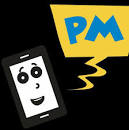Telehealth has revolutionized the way patients access medical care, offering a convenient and flexible option when in-person visits aren’t possible. Whether it’s due to work commitments, mobility issues, or mental health concerns like anxiety, more patients are turning to virtual appointments as a practical solution to get the care they need.
Even before the COVID-19 pandemic accelerated the adoption of remote healthcare, physicians like Dr. Andrea Arellano Vu and Dr. Kenny Vu, both Family Medicine specialists, had already begun exploring telehealth as a viable way to connect with their patients. Now, with virtual visits firmly integrated into modern medical practices, it’s essential for patients to know how to make these appointments as effective and productive as in-person ones.
Here’s a detailed guide, including five expert tips, to help you get the most out of your telehealth appointment—from preparation to post-visit follow-up.

What Is a Telehealth Appointment?
Telehealth refers to remote healthcare services provided via video conferencing, phone calls, or secure messaging. These appointments allow patients to consult with their healthcare providers from the comfort of their home—ideal for follow-ups, managing chronic conditions, or discussing lab results.
While virtual visits can’t replace every in-person examination, they are incredibly useful for many types of care when approached with the right mindset and preparation.
Why Preparation Matters for Telehealth
Telehealth visits may seem simpler than in-office appointments, but they require active participation and some prep work to be truly beneficial. According to Dr. Arellano Vu, the goal is to make the visit just as meaningful, informative, and personalized as if you were sitting in the exam room.
Let’s walk through five essential tips to get ready for your next virtual appointment.
Tip #1: Understand the Telehealth Platform
Ask for Clear Instructions Ahead of Time
Every medical practice uses a different telehealth platform. Some might use Zoom for Healthcare, Doxy.me, MyChart, or a proprietary hospital system.
-
Request guidance from the office staff on how to access the platform.
-
Confirm that the system is HIPAA-compliant and secure.
-
Make sure you provide your consent to participate in virtual care.
If you feel unsure, don’t hesitate to ask the staff to walk you through a test login or troubleshoot any issues you encounter. Being familiar with the system ahead of time avoids delays or missed appointments.
Tip #2: Do Your Medical Homework in Advance
Gather Vital Information Before the Call
Treat a virtual visit with the same seriousness as an in-person one. Here’s what to have ready:
-
Record your temperature, heart rate, blood pressure, or blood sugar, depending on your condition.
-
Weigh yourself and jot down any symptoms, questions, or concerns.
-
Have your medications in front of you or prepare a list with dosages and schedules.
-
If you’re showing something physical—like a rash or mole—take a clear photo and send it to your doctor in advance, as cameras may not capture skin conditions well.
Tip #3: Test Your Technology Beforehand
Ensure Your Devices Are Ready to Go
The last thing you want is a glitch during your appointment. Here’s how to prepare your tech:
-
Fully charge your phone, tablet, or laptop.
-
Do a test run to make sure the platform loads and your login credentials work.
-
Check your internet connection, webcam, and microphone.
-
Use headphones if you experience echoing, and adjust the speaker volume for clarity.
Reliable tech = a smooth visit.
Tip #4: Set the Scene for a Focused Appointment
Eliminate Distractions and Improve Visibility
The space you choose matters. For a seamless virtual experience:
-
Sit in a quiet room with good lighting.
-
Avoid backlighting—don’t face a window, as it will shadow your face.
-
Prop up your device so your entire face is visible.
-
Have a caregiver or family member nearby if you need help relaying information or remembering instructions.
Tip #5: Get a Summary and Share Your Feedback
Ask for a Recap & Communicate Openly
After your appointment:
-
Ask for a visit summary or care plan, especially if your provider doesn’t send one automatically.
-
Clarify any next steps like follow-up tests, medications, or referrals.
-
Provide feedback—what worked well and what didn’t. This helps the provider improve future virtual care.
A good telehealth experience is a collaborative process, and your voice matters.
Frequently Asked Questions:
Q1. What should I do to prepare for a telehealth appointment?
A: Prepare your medical info (vitals, symptoms, meds), test your device, choose a quiet, well-lit location, and understand how to use the platform.
Q2. Is telehealth as effective as in-person visits?
A: For many conditions and follow-ups, yes. While some physical exams still require office visits, telehealth can provide quality care remotely.
Q3. What equipment do I need for a telehealth visit?
A: A smartphone, tablet, or computer with a webcam, microphone, internet connection, and access to your provider’s telehealth platform.
Q4. Can I have someone join my telehealth appointment?
A: Absolutely. A family member or caregiver can be present to assist, especially if you need help sharing information or remembering advice.
Q5. Will my telehealth appointment be private and secure?
A: Yes. Reputable providers use encrypted, HIPAA-compliant platforms to protect your privacy and medical information.




